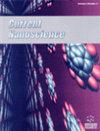生物吸附剂去除重金属及其功效综述
IF 1.5
4区 材料科学
Q4 BIOTECHNOLOGY & APPLIED MICROBIOLOGY
引用次数: 0
摘要
:工业排放大量受重金属污染的废水。重金属是造成污染的主要原因,未经处理排放到环境中会对健康造成潜在危害。去除重金属的标准吸附剂有一定的局限性,如金属去除不彻底、能耗高、产生不良废物等。因此,使用生物吸附剂是传统程序的有效替代方法。本评论对不同论文中获得的最佳结果进行了评估和总结,这些论文涉及不同参数,如生物吸附剂的去除效率及其吸附容量、吸附剂用量以及去除单一重金属和组合重金属的预处理效果。讨论了 pH 值、接触时间和吸附剂剂量对生物吸附的影响。研究了各种生物吸附剂的 Langmuir 模型和 Freundlich 模型,得出并总结了各自的结果。还评估了伪一阶和二阶模型,以研究吸附动力学。通过以上综述,可以得出结论:生物吸附剂是处理工业废水的一种很有前途的替代方法,这主要是因为生物吸附剂的金属结合能力强、成本低、在稀释废水中效率高,而且对环境友好。本文章由计算机程序翻译,如有差异,请以英文原文为准。
Review on Heavy Metal Removal and Efficacy of Biosorbents
: Industries release a significant amount of wastewater contaminated with heavy metals. It is a major cause of pollution and a potential health hazard when discharged into the environment without treatment. Standard adsorbents for removing heavy metals have certain limitations, like incomplete metal removal, high energy requirements, and undesirable waste generation. Therefore, the use of biosorbents is an effective alternative to conventional procedures. This critical review evaluates and summarizes the optimum results obtained from different papers covering different parameters such as biosorbent removal efficiency and their adsorption capacity, adsorbent dosage, and effect of pretreatment for removal of single and combination of heavy metals. The influence of pH, contact time, and sorbent dose on biosorption has been discussed. The Langmuir model and the Freundlich model are studied for various biosorbents, and the respective results are obtained and summarised. The pseudo-first and second-order models have been evaluated to study the sorption kinetics. Through this review, it can be concluded that biosorbents can be a promising alternative to treat industrial effluents, mainly because of their high metal binding capacity, low cost, high efficiency in diluted effluents, and environmentally friendly nature.
求助全文
通过发布文献求助,成功后即可免费获取论文全文。
去求助
来源期刊

Current Nanoscience
工程技术-材料科学:综合
CiteScore
3.50
自引率
6.70%
发文量
83
审稿时长
4.4 months
期刊介绍:
Current Nanoscience publishes (a) Authoritative/Mini Reviews, and (b) Original Research and Highlights written by experts covering the most recent advances in nanoscience and nanotechnology. All aspects of the field are represented including nano-structures, nano-bubbles, nano-droplets and nanofluids. Applications of nanoscience in physics, material science, chemistry, synthesis, environmental science, electronics, biomedical nanotechnology, biomedical engineering, biotechnology, medicine and pharmaceuticals are also covered. The journal is essential to all researches involved in nanoscience and its applied and fundamental areas of science, chemistry, physics, material science, engineering and medicine.
Current Nanoscience also welcomes submissions on the following topics of Nanoscience and Nanotechnology:
Nanoelectronics and photonics
Advanced Nanomaterials
Nanofabrication and measurement
Nanobiotechnology and nanomedicine
Nanotechnology for energy
Sensors and actuator
Computational nanoscience and technology.
 求助内容:
求助内容: 应助结果提醒方式:
应助结果提醒方式:


